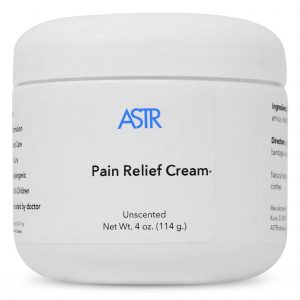Chiropractic Adjustment: Definition, Uses, Types, Treatment & Research Studies
Chiropractic Adjustment: Definition, Uses, Types, Treatment & Research Studies
What is Chiropractic Adjustment?
A chiropractic adjustment it is also called joint manipulation or joint mobilization. Chiropractic adjustment involves the chiropractor manually manipulating of the spine. Chiropractic adjustments may treat low back pain and any other abnormal functions of the body. It can also help with a “fixed” or “locked” joint, or joint that is not moving. The goal of an adjustment is to increase range of motion, reduce nerve irritability and improve function.
What does a Chiropractic Adjustment do?
A chiropractic adjustment is done to avoid any degeneration of soft tissue and to help normalize spinal function. The body’s natural healing process can begin to work properly once the nervous system is functioning well.
Types of Chiropractic Adjustment
An adjustment can either be a high velocity, low amplitude adjustment or manipulation. A quick thrust applied to the vertebrae releases the gas (joint cavitation) which releases the pressure within the joint.
Chiropractic Adjustment Research Studies
- A systematic review is a type of literature review that collect and critically analyze multiple research studies or papers. A systematic review by Rubinstein et al. researched the the effectiveness of spinal manipulation therapy for those suffering from chronic lower back pain.24 This study assessed 26 randomized controlled trials including 6070 participants.24 Evidence showed no significant difference between spinal manipulation therapy and other intervention approaches.24
- A systematic review is a type of literature review that collect and critically analyze multiple research studies or papers. A systematic review published by Canter and Ernst studied the effectiveness of spinal manipulation for treatment of multiple regions of pain, including, but not limited to, back and neck pain.32 16 trials were included for the purpose of this study.32 Evidence suggested that spinal manipulation was ineffective for all evaluated forms of pain.32
Based on the evidence presented in the included systematic reviews, spinal manipulation does not appear to be an effective form of treatment for different pain types, including back pain. While spinal manipulation is seen as ineffective, ASTR treatment has shown evidence in a recent study that show it can be effective for many evaluated forms of pain. ASTR stands for Advanced Soft Tissue Release, a manual therapy specialty developed by Dr. Joesph Jacobs, DPT. ASTR takes a holistic approach to treating the source of soft tissue restriction in a way that is virtually pain-free and highly effective.
Verweise:
24. Rubinstein SM, Terwee CB, Assendelft WJ, Buren MRD, Tulder MWV. Wirbelsäulenmanipulative Therapie bei akuten Kreuzschmerzen. Wirbelsäule. 2011;36(13):825-846. doi:10.1002/14651858.cd008880.pub2.
25. Gattie E, Cleland JA, Snodgrass S. Die Wirksamkeit der Triggerpunkt-Trockennadelung bei Erkrankungen des Bewegungsapparates durch Physiotherapeuten: Eine systematische Überprüfung und Metaanalyse. Zeitschrift für Orthopädie und Sportphysiotherapie. 2017;47(3):133-149. doi:10.2519/jospt.2017.7096.
26. Dunning J., Butts R., Mourad F., Young I., Flannagan S., Perreault T. Dry Needling: eine Literaturrecherche mit Auswirkungen auf die Richtlinien der klinischen Praxis. Physiotherapie Bewertungen. 2014;19(4):252-265. doi:10.1179/1743288x13y.0000000118.
27. Morihisa R. Eskew J. McNamara A., et al. Dry Needling bei Patienten mit muskulären Triggerpunkten im unteren Viertel: eine systematische Übersicht. Int J Sport Phys Ther. 2016;11(1):1-14.
28. Cotchett MP, Landorf KB, Munteanu SE. Wirksamkeit von Dry Needling und Injektionen von myofaszialen Triggerpunkten im Zusammenhang mit plantaren Fersenschmerzen: eine systematische Überprüfung. J Fuß Knöchelres. 2010;3:18.
29. Cummings TM, White AR. Needling-Therapien bei der Behandlung von myofaszialen Triggerpunktschmerzen: eine systematische Überprüfung.Arch Phys Med Rehabil 2001;82:986-92.
30. Xue CC, Helme RD, Gibson S, et al. Wirkung der Elektroakupunktur auf den Opioidkonsum bei Patienten mit chronischen Schmerzen des Bewegungsapparates: Protokoll einer randomisierten kontrollierten Studie. Versuche. 2012;13:169. doi:10.1186/1745-6215-13-169.
31. Scott N. A., Guo B., Barton P. M., Gerwin R. D. Trigger point injections for chronic non-malignant musculoskeletal pain: a systematic review. Schmerzmittel. 2009;10(1):54–69. doi: 10.1111/j.1526-4637.2008.00526.x.
32. Ernst E., Canter PH. Eine systematische Überprüfung systematischer Überprüfungen der Wirbelsäulenmanipulation. Zeitschrift der Royal Society of Medicine. 2006;99(4):192-196.
Effektive Schmerzlinderung zu Hause

- Schnelle Ergebnisse
- Die Behandlung dauert etwa 5 Minuten pro Tag
- Einfach zu verwendende medizinische Hilfsmittel
- Natürlicher ganzheitlicher Ansatz
- Behandlung der Grundursache des Problems
- Erfunden von einem Arzt, der chronische Schmerzen hatte
- Gestützt durch über 45 Studien
ASTR Außergewöhnlich anders
Von verschiedenen Websites gesammelte Bewertungen
Schneller heilen




